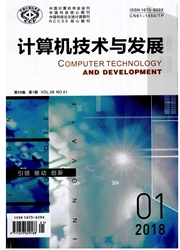

 中文摘要:
中文摘要:
IEEE 802.11e 标准被建议由提供交通的按优先级排列的区别在 WLAN 提供 QoS 支持。当车站的数字增加时,自从在一样的优先级存取范畴(交流) 的所有车站,一样参数设定,在选择一样的值的一样的交流的不同车站的概率将增加,它将导致碰撞。参数策划的随机的适应 MAC (中等存取控制)( 斜面) 被建议,它使用随机的适应 MAC 区别参数而不是在 802.11e 标准使用的静态的。斜面的性能用 NS2 与提高的分布式的协作存取(EDCA ) 的相比。结果证明斜面能减少 AC 的碰撞率并且由使用适应随机的竞争窗户尺寸和内部框架的间距价值改进产量。斜面保证在任何给定的时间,一样的优先级的几流动有不同 MAC 参数值。由为内部框架的间距价值和 backoff 时间使用随机的偏移量,斜面能提供 intra 交流区别。模拟结果证明斜面不管交通负担,以产量和端对端的延期超过 EDCA。
 英文摘要:
英文摘要:
The IEEE 802.11 e standard is proposed to provide QoS support in WLAN by providing prioritized differentiation of traffic Since all the stations in the same priority access category (AC) have the same set of parameters, when the number of stations increases, the probability of different stations in the same AC choosing the same values will increase, which will result in collisions. Random adaptive MAC (medium access control) parameters scheme (RAMPS) is proposed, which uses random adaptive MAC differentiation parameters instead of the static ones used in the 802.11 e standard. The performance of RAMPS is compared with that of enhanced distributed coordination access (EDCA) using NS2. The results show that RAMPS can reduce collision rate of the AC and improve the throughput by using adaptive random contention window size and inter-frame spacing values. RAMPS ensures that at any given time, several flows of the same priority have different MAC parameter values. By using the random offset for the inter-frame spacing value and the backoff time, RAMPS can provide intra-AC differentiation. The simulation results show that RAMPS outperforms EDCA in terms of both throughput and end-to-end delay irrespective of the traffic load.
 同期刊论文项目
同期刊论文项目
 同项目期刊论文
同项目期刊论文
 期刊信息
期刊信息
